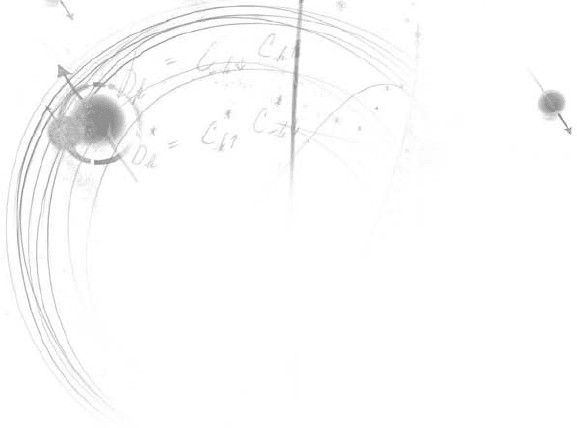Cooper L.N., Feldman D. (Eds.) BCS: 50 Years
Подождите немного. Документ загружается.

October 4, 2010 10:17 World Scientific Review Volume - 9.75in x 6.5in ch20
BCS from Nuclei and Neutron Stars to Quark Matter and Cold Atoms 521
7. Concluding Remarks
To close on a personal note, I would like to dedicate this paper to the memory
of John Bardeen, who was a warm colleague and caring mentor of me as a
young faculty member in Urbana. It was a source of great pleasure to John
to see how BCS expanded our understanding of modern physics beyond
laboratory superconductors — from nuclear physics to astrophysics to high
energy physics, a shaping that continues to this day, from cold atomic physics
to quark matter.
References
1. A. Bohr, B. R. Mottelson and D. Pines, Phys. Rev. 110, 936 (1958).
2. A. B. Migdal, Nucl. Phys. 13, 655 (1959).
3. V. L. Ginzburg and D. A. Kirzhnits, Zh. Eksp. Teor. Fiz. 47, 2006 (1964).
4. Y. Nambu and G. Jona-Lasinio, Phys. Rev. 122, 345 (1961); 124, 246 (1961).
5. G. Baym, J. Bardeen and D. Pines, Phys. Rev. Lett. 17, 372 (1966); Phys. Rev.
156, 207 (1967).
6. D. D. Osheroff, R. C. Richardson and D. M. Lee, Phys. Rev. Lett. 28, 885
(1972); A. J. Leggett, Rev. Mod. Phys. 47, 331 (1975).
7. B. C. Barrois, Nucl. Phys. B129, 390 (1977); D. Bailin and A. Love, Phys.
Rep. 107, 325 (1984).
8. J. Bardeen, L. N. Cooper and J. R. Schrieffer, Phys. Rev. 108, 1175 (1957);
submitted early July 1957.
9. Interview with J. R. Schrieffer by J. Warnow and R. M. Williams, 26 September
1974.
10. L. Hoddeson, G. Baym and M. Eckert, in Out of the Crystal Maze: The His-
tory of Solid State Physics, eds. L. H. Hoddeson, E. Braun, J. Teichmann and
S. Weart, ch. 2 (Oxford Univ. Press, 1992), pp. 146–150.
11. Proc. Rehovoth Conf. Nuclear Structure, Weizmann Institute of Science, Re-
hovoth, September 1957, ed. H. J. Lipkin (North-Holland Pub. Co., Amster-
dam, 1958).
12. A. Bohr and B. R. Mottelson, Kgl. Danske Videnskab. Selskab, Mat.-fys. Medd.
30, 1 (1955).
13. G. Baym, in Mathematical Methods in Solid State and Superfluid Theory,
eds. R. C. Clark and G. H. Derrick (Oliver and Boyd, Edinburgh, 1969),
pp. 121–156.
14. S. Beliaev, Mat.-fys. Medd. 31, 11 (1959).
15. A. Bohr, Rev. Mod. Phys. 48, 365 (1976).
16. M. Ruderman, in Proc. Fifth Eastern Theor. Phys. Conf., ed. D. Feldman
(W. A. Benjamin, New York, 1967).
17. G. Baym, C. J. Pethick and D. Pines, Nature 224, 673 (1969).
18. M. Hoffberg, A. E. Glassgold, R. W. Richardson and M. Ruderman, Phys. Rev.
Lett. 24, 775 (1970).
October 4, 2010 10:17 World Scientific Review Volume - 9.75in x 6.5in ch20
522 G. Baym
19. N.-C. Chao, J. W. Clark and C.-H. Yang, Nucl. Phys. A 179, 320 (1972).
20. A. Gezerlis, Ph.D. dissertation, University of Illinois at Urbana-Champaign,
Urbana, Illinois (2009).
21. A. Gezerlis and J. Carlson, Phys. Rev. C 81, 025803 (2010).
22. A. Gezerlis and J. Carlson, Phys. Rev. C 77, 032801 (2008).
23. G. Baym, C. J. Pethick and D. Pines, Nature 224, 674 (1969).
24. K. Iida and G. Baym, Phys. Rev. D 66, 014015 (2002).
25. J. A. Sauls, in The Lives of Neutron Stars, eds. M. A. Alpar,
¨
U. Kizilo˘glu and
J. van Paradijs (Kluwer, Dordrecht, 1995), p. 457.
26. G. Baym, R. Epstein and B. Link, Physica B178, 1 (1992).
27. P. W. Anderson and N. Itoh, Nature 256, 25 (1975).
28. K. Rajagopal, Nucl. Phys. A 661, 150c (1999); M. Alford, K. Rajagopal and
F. Wilczek, Nucl. Phys. B 537, 443 (1999); T. Sch¨afer and F. Wilczek, Phys.
Rev. Lett. 82 (1999) 3956; Phys. Rev. D 60, 114033 (1999).
29. M. G. Alford, A. Schmitt, K. Rajagopal and T. Sch¨afer, Rev. Mod. Phys. 80,
1455 (2008).
30. K. Iida and G. Baym, Phys. Rev. D 63, 074018 (2001).
31. M. Alford, J. A. Bowers and K. Rajagopal, Phys. Rev. D 63, 074016 (2001).
32. I. Giannakis and H.-C. Ren, Nucl. Phys. B 669, 462 (2003).
33. M. Kobayashi and T. Maskawa, Prog. Theor. Phys. 44, 1422 (1970); G. ’t Hooft,
Phys. Rev. Lett. 37, 8 (1976); Phys. Rev. D 14, 3432 (1976).
34. R. D. Pisarski and F. Wilczek, Phys. Rev. D 29, 338 (1984).
35. T. Hatsuda, M. Tachibana, N. Yamamoto and G. Baym, Phys. Rev. Lett.
97, 122001 (2006); N. Yamamoto, M. Tachibana, T. Hatsuda and G. Baym,
Phys. Rev. D 76, 074001 (2007); G. Baym, T. Hatsuda, M. Tachibana and
N. Yamamoto, J. Phys. G: Nucl. Part. Phys. 35, 104021 (2008).
36. W. Ketterle, this volume.
37. Ref. 1, note on p. 1177.
38. M. R. Schafroth, S. T. Butler and J. M. Blatt, Helv. Phys. Acta 30, 93 (1957).
39. J. Bardeen to F. Dyson, 23 July 1957, Bardeen papers.
40. D. M. Eagles, Phys. Rev. 18, 456 (1969).
41. A. J. Leggett, J. Phys. (Paris) C7, 19 (1980).
42. P. Nozi`eres and S. Schmitt-Rink, J. Low Temp. Phys. 59, 195 (1985).
43. M. W. Zwierlein, J. R. Abo-Shaeer, A. Schirotzek, C. H. Schunck and
W. Ketterle, Nature 435, 1051 (2005).
44. T. D. Lee and C. N. Yang, Phys. Rev. 112, 1419 (1957); K. Huang, in Stud.
Stat. Mech, II, eds. J. de Boer and G. E. Uhlenbeck (North Holland Pub.,
Amsterdam, 1964), 1; H. T. C. Stoof, Phys. Rev. A 45, 8398 (1992); M. Bijlsma
and H. T. C. Stoof, Phys. Rev. A 54, 5085 (1996); P. Gr¨uter, D. Ceperley and
F. Lalo¨e, Phys. Rev. Lett. 79, 3549 (1997); M. Holzmann and W. Krauth, Phys.
Rev. Lett. 83, 2687 (1999).
45. G. Baym, J.-P. Blaizot, M. Holzmann, F. Lalo¨e and D. Vautherin, Phys. Rev.
Lett. 83, 1703 (1999); M. Holzmann, G. Baym, J.-P. Blaizot and F. Lalo¨e, Phys.
Rev. Lett. 87, 120403 (2001).
46. V. A. Kashurnikov, N. V. Prokof’ev and B. V. Svistunov, Phys. Rev. Lett. 87,
120402 (2001).
October 4, 2010 10:17 World Scientific Review Volume - 9.75in x 6.5in ch20
BCS from Nuclei and Neutron Stars to Quark Matter and Cold Atoms 523
47. K. Maeda, G. Baym and T. Hatsuda, Phys. Rev. Lett. 103, 085301 (2009).
48. A. Rapp, G. Zarand, C. Honerkamp and W. Hofstetter, Phys. Rev. Lett. 98,
160405 (2007); A, Rapp, W. Hofstetter and G. Zarand, Phys. Rev. B 77, 144520
(2008).
49. R. W. Cherng, G. Refael and E. Demler, Phys. Rev. Lett. 99, 130406 (2007).
50. T. Ozawa and G. Baym, to be submitted.

This page is intentionally left blank

October 4, 2010 11:13 World Scientific Review Volume - 9.75in x 6.5in ch21
ENERGY GAP, MASS GAP, AND SPONTANEOUS
SYMMETRY BREAKING
Yoichiro Nambu
Enrico Fermi Institute, University of Chicago,
5640 South Ellis Ave., Chicago, IL 60637, USA
This article is based on a talk given at a Symposium at the University of
Illinois on the occasion to commemorate the 50th anniversary of BCS — I
gave a historical overview of how BCS theory has come to be transplanted
to particle physics and has helped solve its problems.
In the early 1950s while I was at the Institute for Advanced Study, Professor
Pines invited me to give a seminar at the University of Illinois as I was
interested in the plasma theory of Bohm and Pines. That was before BCS,
and before I joined the theorists Wentzel and Goldberger at the University
of Chicago.
Now to provide a short story about my background, I studied physics at
the University of Tokyo, graduating at the MS level according to the system
of those days. I was attracted to particle physics because of three famous
names, Y. Nishina, S. Tomonaga and H. Yukawa, who were the founders of
particle physics in Japan. In fact, since this year and last there have been
consecutive centennial celebrations of Tomonaga and Yukawa. But these
people were at different institutions than mine. On the other hand, con-
densed matter physics was pretty good at Tokyo. R. Kubo, well known for
his work in statistical mechanics, was my contemporary. I got into particle
physics only when I came back to Tokyo as a kind of research associate after
the war. Tomonaga had just started to develop the renormalization theory
at his university nearby, and some of my room mates were working with him,
as he also had served as a visiting professor at Tokyo after my graduation.
The remarkable events of the Lamb shift and the pion-muon decay chain
soon occurred, too. In hindsight, though, I must say that my early exposure
to condensed matter physics has been quite beneficial to me.
525
October 4, 2010 11:13 World Scientific Review Volume - 9.75in x 6.5in ch21
526 Y. Nambu
I will now briefly review the history of particle physics to the extent that
is necessary for the main theme of my talk. Particle physics is an outgrowth
of nuclear physics which began in the early 1930s with the discovery of the
neutron by J. Chadwick, the invention of the cyclotron by E. Lawrence,
and the “invention” of meson theory by H. Yukawa. The appearance of an
ever increasing array of new particles in the subsequent decades, and the
advances in quantum field theory gradually led to our understanding of the
basic laws of nature, culminating in the present Standard Model of parti-
cle physics. We have come to know that the elementary particles, or the
fundamental fermions, consist of two kinds, leptons (so named by L. Rosen-
feld) and quarks (so named by M. Gell-Mann). They are characterized by
the internal quantum numbers, flavor and color. The forces or interactions
among them (except for gravity) are described by the various gauge fields.
A set of two leptons and six quarks make up a so-called generation, and
there exist three generations, so far, with increasingly heavier masses. The
electromagnetic and weak forces are due to the flavor gauge fields and are
shared by all the fermions. The strong color forces are unique to the quarks,
and lead to formation of permanent quark composites called hadrons (named
by L. B. Okun), i.e. baryons and mesons.
On the theorists’ side, faced with those new particles, their first attempts
were to make sense out of them by finding some regularities in their prop-
erties. They invoked symmetry principles to classify them. A symmetry
in physics leads to a conservation law. Some conservation laws are ex-
act, like energy and electric charge, but these classification attempts were
mostly based on approximate similarities of masses and interactions, but not
exact symmetries.
Nevertheless, seeing similarities is a natural trait of the human mind, and
in fact it has proved very useful. The near equality of proton and neutron
masses and their interactions led to the concept of isospin SU(2) symmetry
of N. Kemmer, Wentzel’s former student. One could argue, or hope, that the
differences were attributed to the electromagnetic interactions which had a
different symmetry property from the strong interaction of the meson theory.
When strange hadrons showed up, the search for an enlarged symmetry led
to the SU(3) symmetry of M. Gell-Mann and Y. Ne’eman that covered all
hadrons known up to the 1960s, although its origin was, and still is, not
clear.
On the other hand, one could also go in the opposite direction, and elevate
the symmetry to a general dynamical principle. Then symmetry will deter-
mine all physics, a most attractive possibility. Thus the beautiful properties
October 4, 2010 11:13 World Scientific Review Volume - 9.75in x 6.5in ch21
Energy Gap, Mass Gap, and Spontaneous Symmetry Breaking 527
of electromagnetism was extended to the SU(2) non-Abelian gauge field by
C. N. Yang and R. L. Mills
1
as an ideal model for the strong interaction.
But this is a huge oversimplification. Strong interactions are short range,
and the mesons are all massive. Giving a mass to a gauge field destroys
gauge invariance. Nevertheless, this gauge field analogy arose in the 1950s
in two different contexts.
1. The existence of vector mesons ρ (770) (isospin 1) and ω (782) (isospin
0). Indeed the ρ (770) can give attractive forces to hadrons, and seemed
to have a universal coupling strength (g
2
/4π
2
) to isospin current, which
led J. J. Sakurai,
2
my colleague, to promote a vector dominance theory
of strong interactions.
2. The V −A property of the weak interaction as was found by R. Feynman
and M. Gell-Mann,
3
and by R. Marshak and G. Sudarshan,
4
which also
seemed almost universal for those particles known at that time. This
raised the possibility that the weak processes might also be mediated by
a gauge field. The V −A structure and apparent massless neutrinos also
directed our attention to the chirality, or the γ
5
charge, as a possible
symmetry which, however, showed up in subtle ways, in spite of the fact
that it is violated by the masses of the fermions.
So the problem of mass somehow seemed to be a sticking point in our
search for a dynamical symmetry principle for both strong and weak inter-
actions. It is at this point that analogies learned from other branches of
physics have turned out to be very fruitful. I will follow this based on my
own experiences in the early 50s here and in Japan. There are three topics
in this connection.
1. The Debye screening of the Coulomb interaction turns the 1/r potential
into a Yukawa form exp(−µr)/r. In ionized media the screening gives
rise to the plasma oscillations, first noted by I. Langmuir and Tonks.
5
It is a mode where the dispersion relation ω versus k has a mass (in
particle physics language). I was intrigued when D. Bohm, E. P. Gross,
and D. Pines
6
gave a systematic description of this phenomenon, and
generalized it to transverse modes. I tried hard, though unsuccessfully, to
apply it to the problems of nuclear physics, like the saturation of nuclear
forces and the large spin-orbit effects.
2. Tomonaga wrote a paper
7
on a description of collective modes in one-
dimentsonal fermionic systems. Stimulated by this, I found that, for
bosonic media in general, one could apply Dirac’s canonical transforma-
tion from the creation and annihilation operators to number and phase

October 4, 2010 11:13 World Scientific Review Volume - 9.75in x 6.5in ch21
528 Y. Nambu
operators, and convert a Hamiltonian for an interacting medium of the
type
H =
Z
1
2m
|∇ψ|
2
+
1
2
ZZ
ρV ρ
0
, ψ =
√
ρe
iθ
into an approximate effective form quadratic in ρ and θ
H ∼
Z
1
2m
ρ
0
|∇θ|
2
+
1
4ρ
0
|∇ρ|
2
+
1
2
ZZ
ρV ρ
0
One immediately obtains the eigenvalues,
ω(k)
2
∼
k
2
m
ρ
0
V (k) +
k
2
4mρ
0
For the Coulomb case V = e
2
/k
2
, we get the plasma “mass”
ω
2
P
= e
2
ρ
0
/m .
3. Then there is the more important and mysterious London theory of super-
conductivity, based on the ansatz j = ΛA. The magnetic field B acquires
the “mass” Λ(= ω
P
) with an appropriate definition of ρ
0
and m. This
was to become the problem to be understood. I learned, among others,
of a work by M. R. Schafroth,
8
another former student of Wentzel’s, on
the Meissner effect of a Bose gas. All these examples gave a hint that
the mass of gauge fields in particle physics might also be resolved if one
considered the vacuum as a kind of medium. Indeed Dirac had already
invoked this analogy in his interpretation of the negative energy solution
of his equation.
Now I come to the BCS theory.
9
I first heard about it when our boss
Wentzel invited Mr. Schrieffer for a seminar before the work was published.
I understood that he was still a graduate student. Subsequently he would
join our faculty, and I greatly benefited from our interaction. I remember
the excitement I felt at the seminar, but at the same time I became wor-
ried about the fact that their Hartree–Fock state was a superposition of
different number of charges and did not appear to respect gauge invariance.
Soon thereafter N. N. Bogoliubov
10
and J. G. Valatin
11
independently in-
troduced the concept of quasiparticles as fermionic excitations in the BCS
medium. The quasiparticles did not carry a definite charge as they were a
superposition of electron and hole, with their proportion depending on the
momentum.
How can one then trust the BCS theory for discussing the electro-
magnetic properties like the Meissner effect? As this doubt gradually grew

October 4, 2010 11:13 World Scientific Review Volume - 9.75in x 6.5in ch21
Energy Gap, Mass Gap, and Spontaneous Symmetry Breaking 529
more serious in my mind, I decided to attack it, but it actually took two
years before I was able to do so to my satisfaction and publish the result.
12
In
the mean time, the problem was addressed by many people,
13
but I wanted
to understand it in my own way. Essentially it is the presence of a mass-
less collective mode, now known by the generic name of Nambu–Goldstone
(NG) boson, that saves charge conservation or gauge invariance. To describe
the Bogoliubov–Valatin (BV) quasiparticle, I introduced a two-component
notation, which is similar to the Gor’kov formalism.
14
In this space, the
Hamiltonian for the quasiparticle is given as
H = ψ
†
(τ
3
ε(k) + τ
1
∆)ψ
(ε: kinetic energy relative to the Fermi energy; ∆: gap) The charge is di-
agonal (∼ τ
3
) in this space, but the BV state is not. The collective mode
is an excitation of the BV pairs ∼ ψ
†
τ
2
ψ. It is not the eigenstate of charge
either, but its interaction with the quasiparticle, i.e. its emission and absorp-
tion, insures that charge is conserved overall when a quasiparticle undergoes
acceleration. In other words, the charge-current operator j
µ
is made up of
contributions from quasiparticle as well as the collective cloud around it; j
µ
is not diagonal in the energy basis, but divergence-free. In addition to the
massless NG mode, I found another collective mode in the direction of the
gap ∼ τ
1
, with mass 2∆. It is a quasiparticle composite with zero binding
energy, which may be thought of being similar to the so-called sigma meson
and Higgs boson in its relation to the NG mode. I also found that, when the
Coulomb interaction between quasiparticles is included, it mixes strongly
with the massless collective mode because of their common massless nature,
and they turn into the massive plasmon mode. The correct expression for
the charge and current is,
ρ
tot
= ρ
BV
+
1
v
2
∂φ
∂t
, v = v
Fermi
/
√
3
J
tot
= j
BV
− ∇φ ,
where φ is the NG mode, so that
∂ρ
tot
/∂t + ∇ · J
tot
=
1
v
2
∂
2
φ
∂
2
t
− ∇
2
φ = 0
The effect of the Coulomb interaction is to screen this longitudinal part of
charge-current, but leaves the London term for the transverse part.
Thinking of general characterizations of the BCS mechanism, the idea
of spontaneous symmetry breaking (SSB), with the associated massless col-
lective modes arose in my mind. (The word SSB was later introduced by
October 4, 2010 11:13 World Scientific Review Volume - 9.75in x 6.5in ch21
530 Y. Nambu
M. Baker and S. Glashow.
15
) The phenomenon is due to the fact that the
lowest energy state of the system is infinitely degenerate, and a Hilbert space
of the quasi-particle excitations is built on just one of the vacua. Hilbert
spaces built from different vacua are equivalent but are orthogonal to each
other in the sense that matrix elements of local observables between them are
zero because of the infinite degrees of freedom of the system. They are like
different phases of a medium at transition temperature. The NG collective
modes correspond to local fluctuations into other vacua, so the excitation
energy goes to zero in the long wave length limit.
The broken symmetry under question in the BCS case was that of electric
charge conservation, but it immediately reminded me of analogous cases like
ferromagnetism and crystal formation. They correspond to a global break-
ing of symmetry, in these cases that of spin rotation and space of translation
and rotation, respectively, and the corresponding collective modes are the
magnon and the phonons (longitudinal and tranverse). I thought of col-
lecting further examples systematically before writing a general paper on
this problem. I had used the name zeron for the NG boson. Incidentally
I also realized that this SSB mechanism was what Heisenberg had invoked
in his ill-fated nonlinear unified field theory
16
to generate more degrees of
freedom than are in the original Lagrangian, although this would amount to
simultaneous existence of different phases, or worlds.
The emergence of the “zeron” and its subsequent transfiguration into a
massive gauge field was elucidated by the works of a number of people,
17
starting with J. Goldstone. They made use of a model theory with a scalar
field with nonlinear terms, which eventually led to the electroweak unification
of Glashow, Salam, and Weinberg and the current Standard Model of particle
physics. In hindsight I regret that I should have explored in more detail the
general mechanism of mass generation for the gauge field. But I thought
the plasma and the Meissner effect had already established it. I also should
have paid more attention to the Ginzburg–Landau theory
18
which was a
forerunner of the present Higgs description. I had pushed it out of my
mind because I had not understood the meaning of their order parameter
field. (In writing this, I recall what Wentzel once remarked to me about the
Schroedinger equation: “What a bold step to put a Coulomb potential into
the de Broglie wave!”)
I was actually more intrigued by the similarity of the BV 2-component
fermion formalism and the Dirac equation. Only a spinor of left-handed or
right-handed chirality is sufficient to describe a massless fermion. The two
components of opposite charges in a BV fermion get mixed if a energy gap
